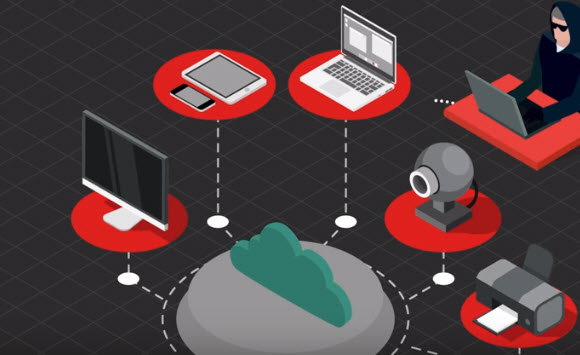
Like a strain of DNA with a complex chain of genes, hybrid threats consist of a variety of viruses, worms and Trojans. Malware hasn't always had this complex makeup, but today an email virus could spread its own SMTP engine, which strikingly resembles a worm. How do you know if it's a virus or a worm? It's a not difficult question for cybersecurity professionals and antivirus platforms to answer.
Hybrid threats endanger everyone, particularly individuals and businesses utilizing cloud computing solutions — data in the cloud has its own separate security risks. It's one thing to deploy security on your own systems, but once the data hits the cloud, it's out of your hands. Not only are could providers dealing with the same cybersecurity threats as us, but they're also dealing with physical security issues. It's important to choose a cloud provider with a track record of comprehensive security compliance. Review five of the most common hybrid security threats and solutions your business can take if it's on the wrong side of an attack.
Hybrid Virus/Worm
This is a malicious code that combines characteristics of both types of malware. Most modern viruses fall into the hybrid category, according to Ed Skoudis, a SANS Institute instructor and author of "Malware: Fighting Malicious Code ." Potential solutions and/or avoidance measures for people and businesses who fall prey to or are at risk for this attack include:
- Installing cloud antivirus software for home use and hybrid cloud security software for business use
- Patching operating systems to avoid unnecessary vulnerabilities
- Disabling scripting in your Web browser's settings
Inadequate Security Risk Assessments
A security risk analysis is essential for keeping data safe because it lets companies and cloud providers know where to focus their security efforts. Without learning enough about a risk, a business (or cloud provider) may not know how and where an attack originated from. It's harder to plug the hole when you don't know where it is. Potential solutions include:
- A regularly reviewed and critiqued risk-prevention and assessment process
- IDS/IPS systems regularly scanning for malicious traffic
- Log monitoring that's activated, and software updates that are current
Weak Security Management
Computers need protection for everything from memory to software to stored data. However, cloud data is remotely stored, and the cloud provider has the ability to dictate the cloud's security features. This may result in the provider using authentication and authorization procedures that aren't as secure as what you require. You can address potential cloud security gaps by:
- Replicating controls across your cloud solutions
- Taking sensitive data down from the cloud and keeping it on secured, in-house servers
- Encrypting data before it’s stored in the cloud
Inadequate Intellectual Property (IP) Protection
Intellectual property is something — even ideas — you've created. It may be proprietary information that your company uses to set itself apart from competitors. Your intellectual property isn't common knowledge, which is why it requires very thorough encryption when stored remotely. Inadequate IP protection means your sensitive data may be easily accessible to hackers. Fixes include:
- Developing a detailed threat model and abiding by it
- Organizing a permissions matrix
- Hardening your open source components to prevent incursions
Failure to Communicate With the Cloud Provider
All cloud providers should provide agreements that let you know what levels of service you can expect. Without them, you may expose data to unnecessary risks because you're unsure what you can expect a cloud provider to be responsible for. Improve communication with your cloud provider by:
- Following the CSA Security, Trust and Assurance Registry as a reference to know what to ask for
- Asking more questions and setting rigorous standards and expectations for the types of answers you expect to get from the cloud provider
Unfortunately, there's a variety of hybrid cloud security threats. The above are just some of the most common — but fixable — issues. With a little planning and know-how to improve your organization's security-compliance structures, you can successfully mitigate these threats. Partnering with a trusted company that provides Adaptive Security and robust cloud security solutions is a great next step.
Related Articles and Links:
Website Security – Is Your Business at Risk?
What is VPN and Why You Need VPN
What is Advanced Persistent Threat, Signs of APT
Related Products:


